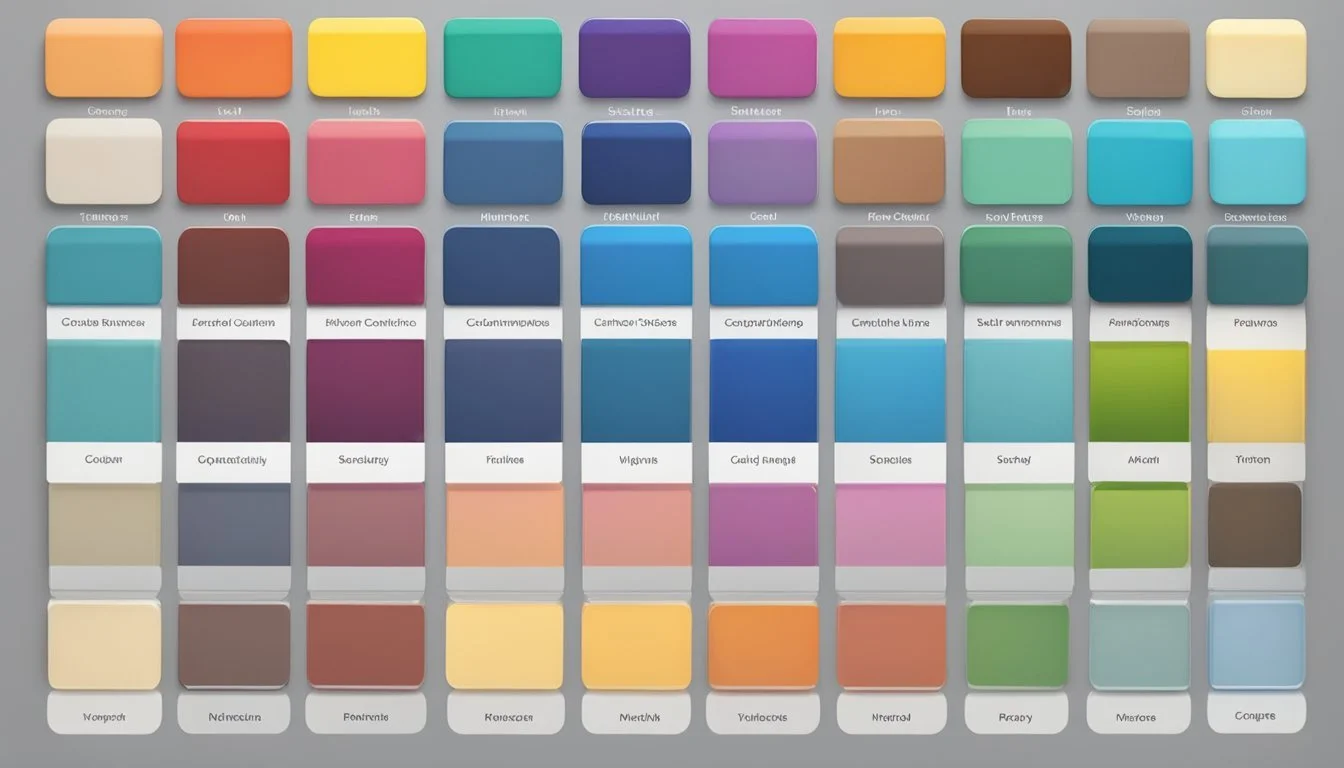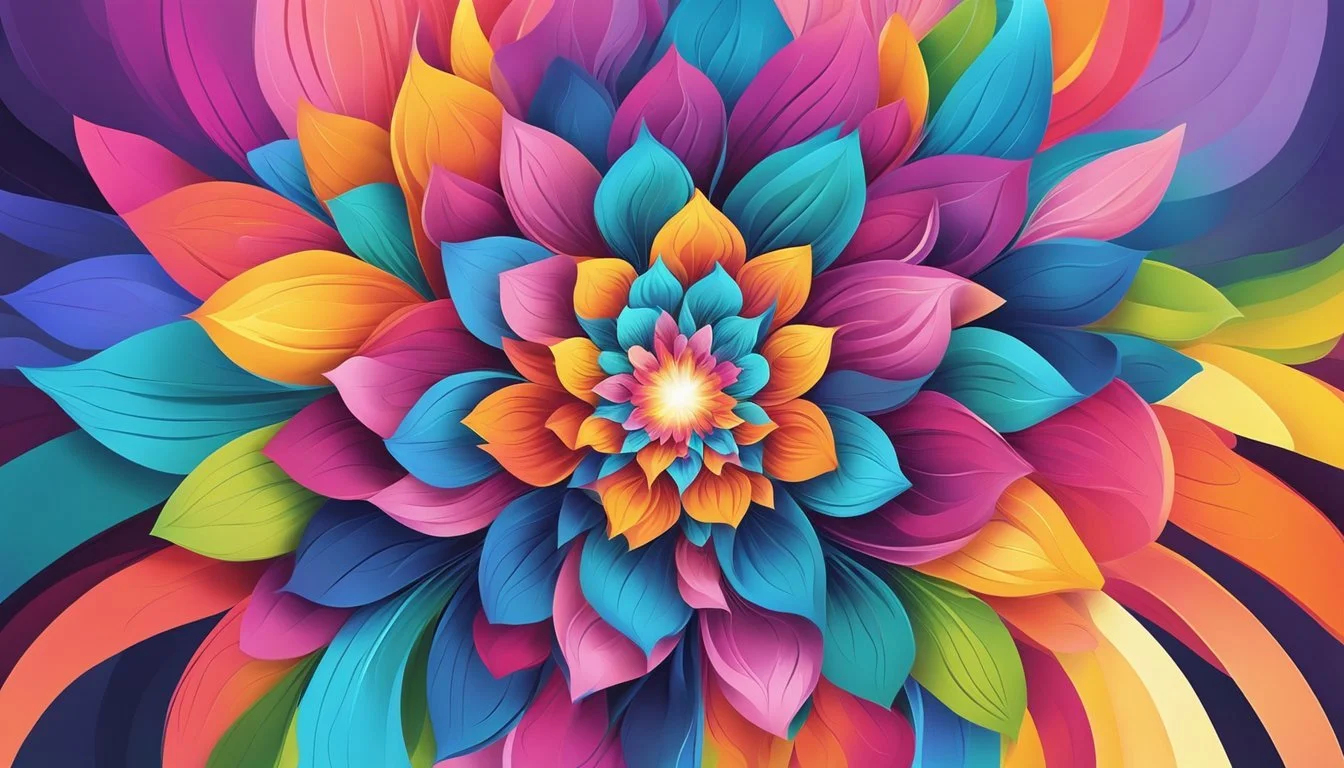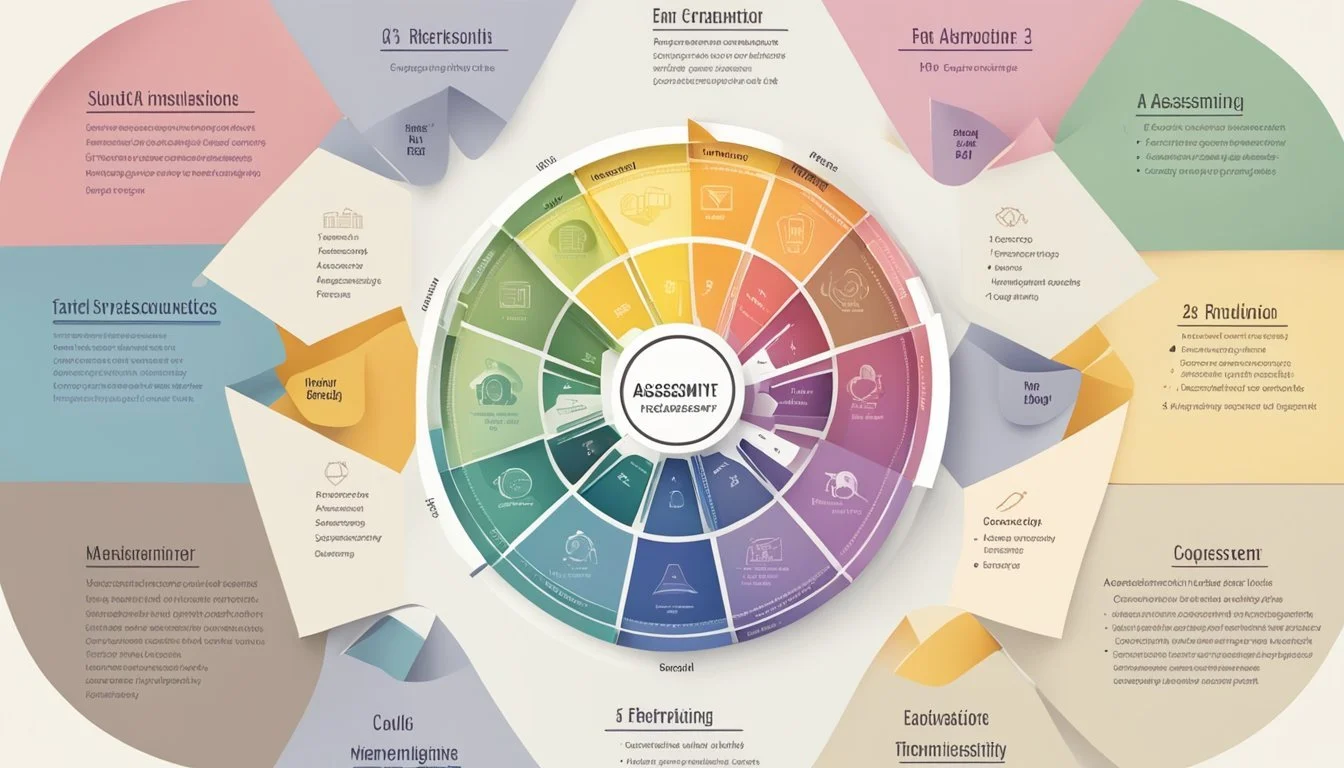The Colorful Spectrum of Personality: Decoding Chromatic Traits and Types
Personality types by color offer a unique and engaging way to understand human behavior and preferences. This approach simplifies complex psychological concepts into easily recognizable hues, making it accessible to a wide audience. The color personality system typically categorizes individuals into four main types: red, blue, green, and yellow, each associated with distinct characteristics and traits.
Color-based personality assessments can provide valuable insights into personal strengths, communication styles, and potential areas for growth. Red personalities often exhibit leadership qualities and a drive for achievement, while blue types tend to be empathetic and relationship-oriented. Green personalities are often analytical and independent, and yellow types are typically enthusiastic and social.
Understanding one's color personality type can lead to improved self-awareness and better interpersonal relationships. This knowledge can be applied in various settings, from personal development to team building in professional environments. By recognizing the different color types, individuals can adapt their communication and collaboration styles to work more effectively with others.
The Concept of Personality Types by Color
Personality types by color offer a unique approach to understanding individual traits and behaviors. This framework associates specific colors with distinct personality characteristics, providing insights into personal tendencies and interpersonal dynamics.
Historical Background and Research
The concept of personality types by color emerged in the late 20th century. Dr. Don Lowry developed the True Colors personality assessment in 1978, drawing inspiration from earlier psychological theories. His work built upon ideas from Carl Jung and Isabel Briggs Myers.
Research has shown correlations between color preferences and personality traits. Studies have explored how individuals respond to different hues and how these responses relate to their behaviors and attitudes.
The True Colors model uses four main colors: Blue, Gold, Green, and Orange. Each represents a set of personality traits and values. This system has been applied in various fields, including education, business, and personal development.
Understanding the Color Framework
The color framework assigns personality traits to specific hues. Blue often represents empathy and relationship-oriented individuals. Gold typically signifies structure and responsibility. Green is associated with analytical and innovative thinkers. Orange usually denotes spontaneity and action-oriented personalities.
Each color type has strengths and potential challenges. Blues excel in nurturing relationships but may struggle with criticism. Golds are reliable and organized but can be inflexible. Greens are inventive problem-solvers but might appear aloof. Oranges are adaptable and energetic but may lack follow-through.
Many individuals exhibit traits from multiple color types. The dominant color indicates primary tendencies, while secondary colors reflect additional characteristics. This nuanced approach allows for a more comprehensive understanding of personality complexities.
The Four Primary Color Personality Types
The Color Personality Test categorizes individuals into four distinct types: Red, Blue, Green, and Gold. Each color represents unique traits, behaviors, and strengths that shape a person's interactions and approach to life.
Red Personality Type
Reds are characterized by their passion and determination. They possess natural leadership qualities and thrive in competitive environments. Reds are action-oriented, confident, and quick decision-makers.
Their strengths include:
Strong willpower
Ability to take charge
Reds often excel in roles that require assertiveness and initiative. They may struggle with patience and can sometimes be perceived as overly domineering.
Blue Personality Type
Blues are deeply emotional and empathetic individuals. They value relationships and seek meaningful connections with others. Blues are often described as compassionate, intuitive, and supportive.
Key traits of Blues include:
Strong interpersonal skills
Ability to nurture others
Blues excel in roles that involve helping or counseling others. They may face challenges with criticism and can be overly sensitive at times.
Green Personality Type
Greens are analytical thinkers with a thirst for knowledge. They approach problems logically and enjoy intellectual challenges. Greens are often innovative and value independence.
Distinctive traits of Greens include:
Conceptual thinking
Curiosity and inquisitiveness
Strategic planning abilities
Greens thrive in environments that allow for intellectual exploration. They may struggle with emotional expression and can sometimes appear detached to others.
Gold Personality Type
Golds are known for their organizational skills and sense of responsibility. They value structure, tradition, and dependability. Golds are often detail-oriented and take pride in their reliability.
Key characteristics of Golds include:
Strong work ethic
Attention to detail
Practical problem-solving skills
Golds excel in roles that require precision and adherence to rules. They may face challenges with spontaneity and can be resistant to change at times.
Secondary Characteristics and Tertiary Traits
Personality types associated with colors exhibit distinct secondary characteristics and tertiary traits. These additional attributes provide a more nuanced understanding of individual behaviors and tendencies.
Orange Personality Type Traits
Orange personalities are known for their spontaneous and adventurous nature. They thrive on freedom and excitement, often seeking new experiences and challenges.
Orange types are adaptable and quick-thinking. They excel in crisis situations and can easily improvise solutions to problems.
These individuals are typically charismatic and persuasive. Their enthusiasm is contagious, making them natural leaders in high-energy environments.
Orange personalities value practical skills and hands-on learning. They prefer action over theory and often excel in fields that require physical dexterity or quick reflexes.
Risk-taking is a common trait among orange types. They're not afraid to push boundaries and often enjoy activities that provide an adrenaline rush.
Yellow Personality Type Traits
Yellow personalities are characterized by their optimistic and creative nature. They approach life with enthusiasm and a positive outlook, often inspiring others around them.
These individuals are typically imaginative and innovative. They excel in fields that require original thinking and enjoy coming up with new ideas or solutions.
Yellow types are often social and outgoing. They thrive in group settings and have a knack for bringing people together.
Flexibility is a key trait of yellow personalities. They adapt easily to change and are open to new experiences and perspectives.
Yellow types often have a nurturing side. They're empathetic and caring, making them good friends and supportive team members.
These individuals typically have a good sense of humor. They enjoy making others laugh and often use humor to diffuse tense situations.
Decoding Colors and Personality
Colors offer a visual representation of personality traits, providing insights into behaviors and preferences. This approach enhances understanding and memorability of personality types.
Combining Different Color Traits
Red personalities are often assertive and action-oriented. They tend to be confident leaders who thrive on challenges. Blue personalities are typically empathetic and relationship-focused. They value harmony and emotional connections.
Yellow personalities are generally optimistic and creative. They bring energy and enthusiasm to their surroundings. Green personalities are often analytical and logical. They excel at problem-solving and strategic thinking.
Many individuals exhibit a blend of color traits. A person might have a primary red personality with yellow secondary traits. This combination could result in a dynamic, charismatic leader who approaches challenges with creativity.
Understanding Self and Others
Color personality systems provide a framework for self-awareness and improved interpersonal relationships. Recognizing one's dominant color traits can lead to better understanding of personal strengths and areas for growth.
In professional settings, color personality awareness can enhance team dynamics. A group with diverse color traits can leverage different perspectives for balanced decision-making.
Communication styles often align with color personalities. Reds may prefer direct, concise messages. Blues might appreciate more emotional context in conversations.
By understanding color personalities, individuals can adapt their communication approach. This flexibility can lead to more effective interactions in personal and professional relationships.
Applications in Personal and Professional Life
Understanding color personality types can significantly impact various aspects of life. It provides insights into individual strengths, preferences, and communication styles.
Career Planning and Organizational Roles
Color personality types offer valuable guidance in career planning. Blue personalities often excel in roles focused on relationships and compassion, such as counseling or human resources.
Green types thrive in analytical and problem-solving positions, making them well-suited for research or engineering careers. Gold personalities appreciate structure and organization, performing well in management or administrative roles.
Orange types tend to shine in dynamic, hands-on environments like sales or entrepreneurship. Companies can use this knowledge to build diverse teams, assigning tasks that align with individual strengths.
Fostering Better Relationships
Recognizing color personalities can enhance personal and professional relationships. Blues prioritize harmony and trust, valuing deep connections. Greens appreciate intellectual discussions and may need space for independent thought.
Golds focus on responsibility and planning, preferring clear expectations in relationships. Oranges seek excitement and spontaneity, thriving on new experiences with others.
By understanding these differences, individuals can adapt their communication styles and expectations. This awareness promotes empathy, reduces conflicts, and builds stronger bonds in personal and work relationships.
Advantages and Limitations of Color Personality Typing
Color personality typing offers insights into individual traits and behaviors. This approach has both strengths and potential challenges in its application and interpretation.
Strengths of Color Typing in Self-Understanding
Color typing can enhance self-awareness and promote personal growth. It provides a simple framework for understanding complex personality traits. Users often find it easier to remember and relate to color-based descriptions.
The visual nature of color typing makes it accessible to a wide audience. It can spark meaningful conversations about individual differences in workplaces and relationships. Many find that identifying their dominant color helps them recognize their innate strengths.
Color typing can also highlight areas for improvement. It encourages individuals to reflect on their behaviors and motivations. This self-reflection can lead to more effective communication and teamwork.
Potential Challenges and Misconceptions
Despite its benefits, color typing has limitations. It may oversimplify complex human personalities. Some critics argue that it lacks the depth of more comprehensive psychological assessments.
There's a risk of stereotyping or pigeonholing individuals based on their assigned color. This can lead to misunderstandings or unfair judgments. It's crucial to remember that people are multifaceted and can exhibit traits from multiple color categories.
The accuracy of self-reporting in color typing can be questionable. Individuals might choose responses based on how they want to be perceived rather than their truthful behaviors. This can result in misleading or inaccurate typing.
Color typing should not be used as the sole basis for important decisions. It's best used as a starting point for self-reflection and discussion, not as a definitive measure of personality.
Developing Personal Growth and Emotional Intelligence
Understanding color personality types can significantly enhance personal growth and emotional intelligence. By recognizing individual traits and tendencies, people can develop self-awareness and improve relationships with others.
Enhancing Emotional Awareness
Emotional awareness forms the foundation of personal growth. Individuals can start by identifying their dominant color type and associated emotional patterns. Blues tend to be empathetic and relationship-oriented, while Greens are analytical and logical in their approach to emotions.
Oranges may experience emotions intensely but briefly, focusing on the present moment. Golds often prioritize responsibility and structure in managing their feelings.
Practicing mindfulness techniques helps all color types tune into their emotions more effectively. Regular journaling can reveal patterns in emotional responses, allowing for better self-understanding.
Continuous Personal Development
Personal growth requires ongoing effort and self-reflection. Setting specific, achievable goals aligned with one's color type can accelerate progress. Blues might focus on establishing healthy boundaries, while Greens could work on expressing emotions more openly.
Oranges benefit from creating structure to channel their spontaneity productively. Golds can practice flexibility to adapt to changing circumstances more easily.
Reading books on emotional intelligence and attending workshops tailored to different personality types can provide valuable insights. Seeking feedback from trusted friends or mentors offers external perspectives on areas for improvement.
Developing empathy across color types strengthens interpersonal skills. Blues can teach others about emotional depth, while Greens contribute logical problem-solving approaches to personal growth.
Assessment Tools and Resources
Personality color assessments offer insights into individual traits and preferences. These tools categorize people into color-based types, providing a framework for understanding oneself and others.
Color Personality Tests
Several color-based personality tests are available. The Color Code Personality Assessment is known for its accuracy and ease of use. It categorizes individuals into four color types: Red, Blue, White, and Yellow.
The Real Colors Personality Type Test is another popular option. It identifies four personality types: Gold, Green, Blue, and Orange. This test is often used in workshops and professional development settings.
Both tests provide user-friendly interfaces and intuitive results. They aim to help individuals understand their strengths, communication styles, and potential areas for growth.
Further Reading and Studies
Academic research has explored the validity and applications of color personality assessments. Studies have examined how these tests correlate with other established personality measures.
The Myers-Briggs Company uses color coding to enhance understanding of personality types. This approach helps users recall their dominant functions more easily.
Resources for further exploration include:
Academic journals on personality psychology
Books on color theory and its application to human behavior
Online courses in personality assessment techniques
These materials offer deeper insights into the scientific basis and practical applications of color-based personality typing.




